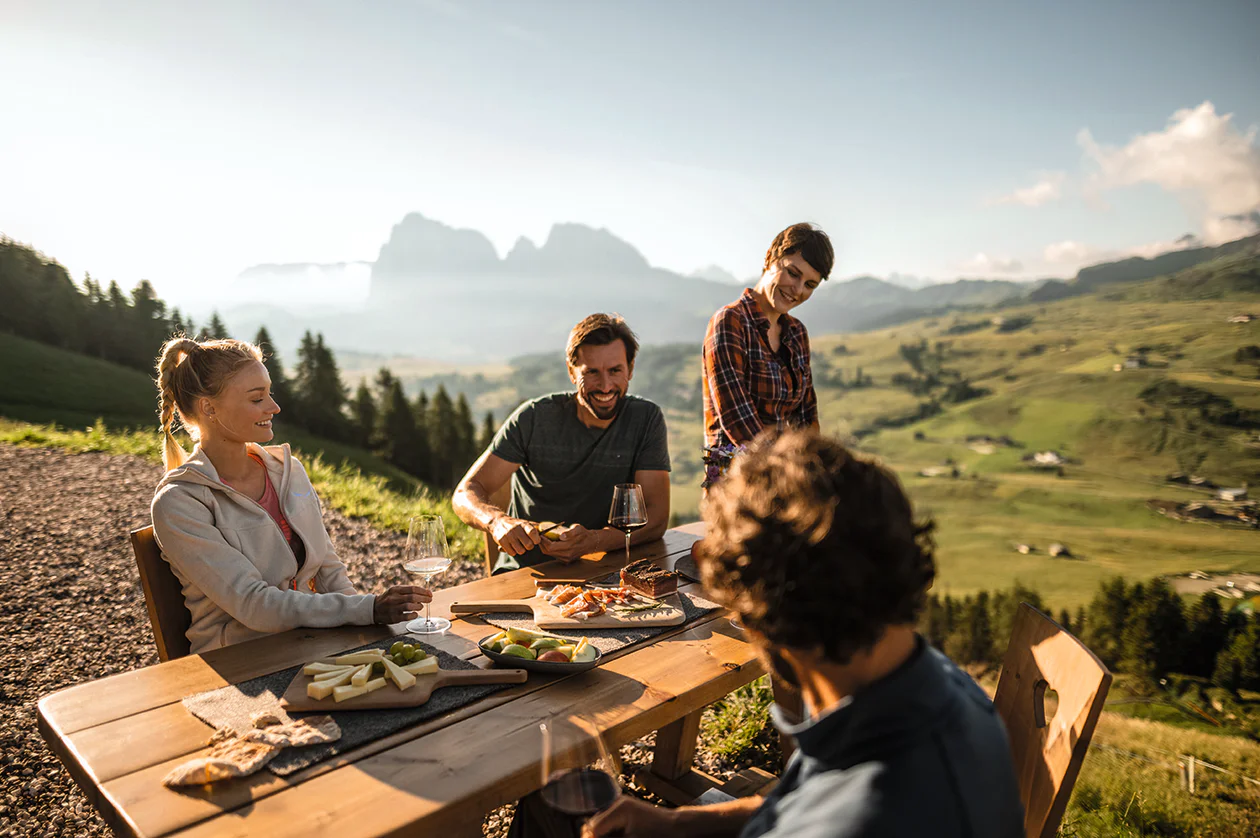Der Großteil befindet sich rund um Bozen. In dieser Gegend fällt dir bestimmt eine architektonische Eigenheit bei den Ansitzen auf, schlossähnliche Bauten aus der Neuzeit bestehend aus einem Herrenhaus und einem Gebäude für landwirtschaftlichen Zweck. Ihr sogenannter Überetscher Stil ist eine Kombination aus nordischer Gotik mit Türmchen und Elementen der italienischen Renaissance – und eben genau in der Gegend zwischen Bozen und Kaltern an der Weinstraße zu finden.
At the exit of the Sirmian river canyon, just below Castle Payersberg, you will find the well-presented, occupied and cultivated Schwanburg. The fortress, which is also called Gaul House was first mentioned in 1286 in a document of the parish church in Bolzano. Since the 14th Century, it was the property of the Lords of Boymundt-Payersberg. Lord Jacob changed the residence between 1560 and 1575 to what it looks like today. He called the annex after the swan in his coats of arms: Schwanburg. Besides black bull of the Boymundter family which they used for a long time, the Lords of Payersberg also had a proud white swan on a blue background in their coat of arms. Today, these animals are still part of the official coat of arms of the village of Nals. The castle consists of a picturesque group of individual buildings with loggias and representative staircases, which surround a courtyard. At the entry gate, the coat of arms of the Boymundt-Payersberger can be seen, together with the year 1560. In the courtyard, you will find a beautiful sundial marked with the year 1563, as well as two walled Roman stones with ivy around them. Castle Schwanburg was the oldest private wine cellar in South Tyrol and today is mainly used as a living and administration building by the company Rudolf Carli Erben. The wine growing estate extends over a surface of approximately 15 hectares and had produced South Tyrolean quality wines under the logo Castel Schwanburg. Besides hundreds of small French oak barrels (barriques), there are also a number of wooden barrels from the time of Empress Maria Theresia in the wine cellar.
Privately owned - not allowed to visit!


















































































